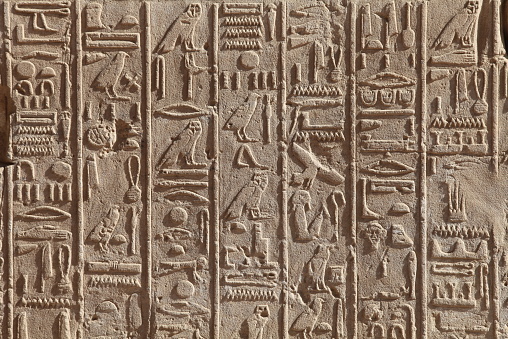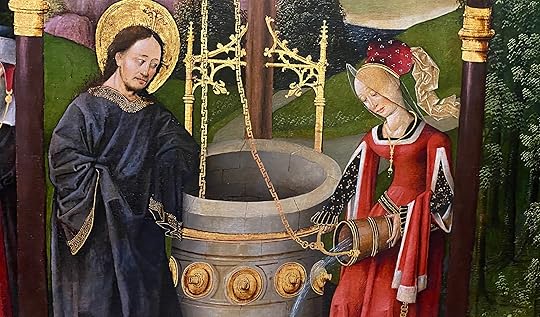William Hemsworth's Blog, page 47
March 13, 2023
Nigerian seminarian reveals what happened when he was kidnapped

On the evening of January 8, 2020, four students at the Good Shepherd Seminary in Kaduna, Nigeria, were taken captive by a group of armed assailants. Three weeks later, one of them was dead. While the three others were free, they were traumatized — one so much that he has been unable to return to […]
Nigerian seminarian reveals what happened when he was kidnapped
March 12, 2023
Seal of Confession under attack? Delaware, Vermont bills draw Catholic criticism

By Kevin J. Jones, Catholic News Agency, March 9, 2023 Two state legislatures are considering ending any legal protections for a priest who learns about sexual abuse in the confessional. In response, Catholic leaders warned that the laws are unconstitutional, put priests in legal jeopardy, and endanger confidentiality with penitents. Delaware’s House Bill 74 is […]
Seal of Confession under attack? Delaware, Vermont bills draw Catholic criticism
Pope: The Church is not a home for some, it’s a home for all

Vatican News provides excerpts of an interview with Pope Francis conducted by Paolo Rodari for Italian Swiss Radio and Television, and scheduled for broadcast on the eve of the tenth anniversary of the pontificate.
Pope: The Church is not a home for some, it’s a home for all
March 11, 2023
Faith and Reason: Exploring the Relationship and How They Interact

The relationship between faith and reason has been a subject of debate for centuries. In this article, we’ll explore the relationship between faith and reason and how they can work together to provide a more complete understanding of reality.
Faith and Reason: Exploring the Relationship and How They Interact
The Ancient Near East Background Of Joshua
The book of Joshua is a book that many have not taken the time to study. There are not many sermons preached on it, and in more liturgical communities it rarely makes an appearance in a lectionary[1]. Joshua has become a battering ram of sorts for the group known as “New Atheists” who point to its context as proof of a god that is genocidal, egocentric, and as a result cannot possibly exist.
However, this assessment is not only unfair but grossly incorrect. To be fair these issues must be addressed and not glossed over. To gloss over them would damage the faith in the long run. These concerns have very real answers that can easily be ascertained if one is willing to the work.
Joshua is a treasure in the Old Testament and acts as a hinge between the five books of Moses, the Pentateuch, and the rest of the Old Testament[2]. It is a book that fulfills the promise of Yahweh to Abraham, Isaac, and Jacob about the promised land. The purpose of this paper is to give a background of this pivotal book of scripture. To assist with this task, we will look at the biblical-historical, archeological, and ancient near east aspects to better understand the background of Joshua.
Biblical-Historical Background In JoshuaThe book of Joshua begins with a recap telling of the death of Moses and a commissioning of Joshua as the new leader of the people[3]. The text takes place after the forty years of wandering through the desert, and after the previous generation had passed away. One may recall that because of there disobedience the Lord said that the transgressing generation would never see the promised land. The new generation, the generation of Joshua, was in training during this time. Joshua learned from Moses, observed the miracles of the Lord, and was being trained to be the new Moses. He was being trained to be the new leader of the people of Israel.
It is placed after the Pentateuch as a fulfillment of God’s promise regarding the promised land. Some scholars had previously thought that it made up the sixth book of the Hexateuch because of its similarities to Deuteronomy[4]. This was the predominant theory up until Dr. Martin Noth proposed what is now known as Deuteronomistic history. According to Noth there was a Deuteronomist editor and compiler who compiled the modern prophets during the Babylonian exile[5]. This editor drew on existing sources and traditions that existed. Joshua was part of this process. There is evidence within Joshua that show that it was written over time, in block periods, and not in a uniform fashion. Therefore, Joshua is not the sole author as tradition suggests. Though this does not mean that he did not write portions of it. This editor compiled the existing Joshua source material, and that of the former prophets, to present a uniform history of Israel.
Joshua can be broken up into two halves. Chapter 1-12 are the conquest narratives that have the miraculous crossing of the Jordan, the siege of Jericho, and other battles in Canaan[6]. Chapters 13-24 is the division of the land among the tribes of Israel. It is a crucial book that not only sees the fulfillment of Yahweh’s promise, but lays the backdrop for what happens in the rest of the Old Testament.
Archaeological MaterialBiblical scholarship was heavily influenced by the rise of archeology in the mid-20th century[7]. Joshua is putting forth historical events so archeology should be able to corroborate them. Based on internal evidence with Joshua archeologists place the events during the late Bronze age[8]. Archeology can corroborate biblical evidence, and there are times when it runs counter to it. The relationship between Joshua and archeology is somewhat mixed.
Jericho is perhaps the best example of archeology in Joshua. Archeologists almost universally accept Jericho as what is now known as Tell es-Sultan[9]. Archeology shows that the city was destroyed and rebuilt a few times before the conquest in Joshua. In the early Bronze age saw cataclysmic earthquakes that destroyed the walls and towers of the city. The city was rebuilt and in the Middle Bronze age was destroyed by Egyptian conquest. By the late Bronze age, the proposed time of Joshua, the city walls were almost completely gone, and the city was laying upon ruins of itself[10]. Archeologists have yet to find a solid place for Gilgal.
Another archeological anomaly for Joshua is the city of Ai. Archeologists believe that the ancient city of Ai is now identified ats et-Tell[11]. The challenge from an archeological standpoint is that et-Tell was not inhabited during the proposed time of Joshua in the late Bronze age. Not only was it uninhabited, but it was unfortified[12]. Some archeologists thought that it was perhaps a military outpost for the nearby city of Bethel, but this appears to not be the case.
These archeological clues do lead to the issue of how Joshua should be interpreted. It does present history but does so in a manner that is not straightforward. The archeological anomalies do not disprove Joshua either. Cities in the ancient world rebuilt over destroyed cities (such is the case with Jericho), and others were abandoned for centuries at a time (Ai) which could lead to significant erosion of evidence. This has led scholars to conclude that Joshua is a narrative history. The theological underpinnings are more important that the history being presented.
Ancient Near Eastern Material In JoshuaTo understand Joshua, it is helpful to understand the genres of Ancient Near Eastern literature. It is not prudent to read ancient history from a modern historical lens. Joshua falls closely in line with other conquest narratives of the ANE. In Joshua God’s role with his people is the underlying theme of its history[13].
These ANE texts also give us more information as to what is happening in the region. One of the main themes in Joshua is the conquest of Canaan. Who was Canaan? Texts from the ANE show us that they were not a unified nation, but a collection of city states. The Amarna letters show that the region was disorganized and there were great periods of social unrest[14]. The Canaanites were vassals of the Egyptians meaning that they paid homage to Egypt and acknowledged their superiority. Though Canaan was a vassal Egypt did not keep them in tight control. Vassal treaties were very common in the ANE and are representative of blessings and curses. This was also made very clear several times in Joshua even as early as 1:8. Joshua 1:8 lays out blessings and prosperity for obedience, and in the case of Achan later on, curses for disobedience. This would have been fully understood among the people.
Joshua chapter two hints a relationship with Egypt when flax is mentioned. The Gezer Calendar mentions that it is harvested in February [15]. Flax was not grown in the Canaanite region but was imported from Egypt and was used to make linen and rope.
 Genocide In Joshua?
Genocide In Joshua?There are also clues regarding the time of the conquest in other documents of the ANE. The annuls of Ramesses III gives us some idea about the region, timeline of events, and even how to understand the language used. There are two timelines as to when the events of Joshua occurred. One theory in 1450 B.C. and the other is around 1200 B.C. The former date would have been at the height of Egypt’s power. If that were the case Egypt would have likely come to the aid of their Canaanite vassals. Joshua gives no record of this, but in 1200 Egypt fell and the Canaanite city states were all on their own. The city states had small armies, if any, and would have been vulnerable to conquest. Based on this information the 1200 date is more probable for the dating. An easy fight would mean that the Lord had delivered the land. The annuls of Ramesses III also assists us with some hard questions. Many times in the annuls the pharaoh says that he completely annihilates opposing armies and peoples[16]. These regions that were annihilated were Turkey, Syria, and Cyprus. Was there a mass genocide that wiped these ethnicities off the Earth? Not at all. That correlation can also be made in Joshua with the supposed “genocide” of the Canaanite people. It was the language of victory and does not mean extermination.
BibliographyBrisco, Thomas V. Holman Bible Atlas. Holman Reference. Nashville, TN: Broadman & Holman Publishers, 1998.
Collins, John J. Introduction to The Hebrew Bible. Minneapolis: Fortress Press, 2004.
Drinkard, Joel F. “The History and Archaeology of the Book of Joshua and the Conquest/Settlement Period.” Review & Expositor 95, no. 2 (Spring 1998): 171–88.
Firth, David G. New Studies in Biblical Theology: Including the Stranger: Foreigners In The Former Prophets. Downers Grove: Intervarsity Press, 2019.
Matthew, Victor. Old Testament Parallels. Holman Reference. New York: Paulist Press, 2016.
McConville, James G. Joshua: An Introduction and Study Guide. UK: Bloomsbury, 2017.
McKenzie, Steven L. Introduction to The Historical Books: Strategies for Reading. Grand Rapids: William B. Eerdmans Publishing, 2010.
Nigro, Lorenzo. “Tell Es-Sultan 2015: A Pilot Project for Archaeology in Palestine.” Near Eastern Archaeology 79, no. 1 (2016): 4–17.
Pink, Arthur Walkington. Gleanings in Joshua. Chicago: Moody Press, 1964.
Walton Et Al. The Bible Background Commentary. Holman Reference. Downers Grove: Intervarsity Press, 2000.
[1]. David G. Firth, New Studies in Biblical Theology: Including The Stranger: Foreigners In The Former Prophets (Downers Grove: Intervarsity Press, 2019), 7.
[2]. Steven L. McKenzie, Introduction to The Historical Books: Strategies For Reading (Grand Rapids: William B. Eerdmans Publishing, 2010), 39.
[3]. Arthur Walkington Pink, Gleanings in Joshua (Chicago: Moody Press, 1964), 29.
[4]. McKenzie, Introduction to The Historical, 43.
[5]. John J. Collins, Introduction to The Hebrew Bible (Minneapolis: Fortress Press, 2004), 183.
[6]. McKenzie, Introduction to The Historical, 45.
[7]. Collins, Introduction to The Hebrew, 187.
[8]. McKenzie, Introduction to The Historical, 48.
[9]. James G. McConville, Joshua: An Introduction and Study Guide (UK: Bloomsbury, 2017), 33.
[10]. Lorenzo Nigro, “Tell Es-Sultan 2015: A Pilot Project for Archaeology in Palestine,” Near Eastern Archaeology 79, no. 1 (2016).
[11]. Thomas V. Brisco, Holman Bible Atlas, Holman Reference (Nashville, TN: Broadman & Holman Publishers, 1998), 78.
[12]. Joel F. Drinkard, “The History and Archaeology of the Book of Joshua and the Conquest/Settlement Period,” Review & Expositor 95, no. 2 (Spring 1998).
[13]. Walton Et Al, The Bible Background Commentary, Holman Reference (Downers Grove: Intervarsity Press, 2000), 211.
[14]. Victor Matthew, Old Testament Parallels, Holman Reference (New York: Paulist Press, 2016), 156.
[15]. Ibid., 166.
[16]. Ibid., 163.
Samaritans, The Woman at the Well, And The Background Of John 4
 William Hemsworth-The Bible Catholic
William Hemsworth-The Bible Catholic
The Gospel of John is one that greatly helps us understand exactly who Jesus is. John has a higher Christology than the synoptics and was the last written. In the Gospel of John, we have many key doctrine such as the personification of God’s Word in the person of Christ, as well as a synthetic parallelism with the book of Genesis to link the idea together[1].
One of the most popular accounts in the Gospel is the interaction that Jesus has with the Samaritan woman in John 4:1-26. When one reads this account there are many feelings that one may experience. First and foremost is continues the theme of the previous two stories about gentiles coming to faith[2]. Secondly it depicts Jesus fleeing persecution from the Pharisees because he was getting more disciples than John the Baptist[3]. One also sees a series of social…
View original post 2,924 more words
3-Point Mass prep: Going beyond our boundaries

The Gospel for this Sunday is John 4:5-42 1. A word of introduction Jesus crosses boundaries to meet another person. Even in ambiguous situations, he has the courage to go beyond. He does so out of love. The meeting with the Samaritan woman is just one example of this. 2. Keywords Jesus, tired from his journey, sat […]
3-Point Mass prep: Going beyond our boundaries
March 10, 2023
German Synodal Assembly allows women to preach at Mass

The final assembly also clears the way for blessing ceremonies of same-sex couples in the Catholic Church in Germany Thomas Sternberg (right), president of the Central Committee of German Catholics, and Georg Bätzing, bishop of Limburg and president of the German Bishops’ Conference, open the Second Synodal Assembly of the Catholic Church in the Forum […]
German Synodal Assembly allows women to preach at Mass
Pope Francis discusses revising priestly celibacy in new interview
By Courtney Mares, Catholic News Agency, March 10, 2023 In a new interview, Pope Francis has discussed the possibility of revising the Western discipline of priestly celibacy. “There is no contradiction for a priest to marry. Celibacy in the Western Church is a temporary prescription: I do not know if it is settled in one […]
Pope Francis discusses revising priestly celibacy in new interview
March 9, 2023
Irish pastoral letter calls for “creative” solution to priest shortage

A Lenten pastoral letter from the Bishop of the Diocese of Achonry, Ireland, is calling attention to the dwindling number of priests in the diocese. As the diocese marks 10 years without any Catholic men pursuing a vocation to the priesthood, Bishop Paul Dempsey outlined some of the challenges they will face going forward, but […]
Irish pastoral letter calls for “creative” solution to priest shortage
William Hemsworth's Blog
- William Hemsworth's profile
- 7 followers



